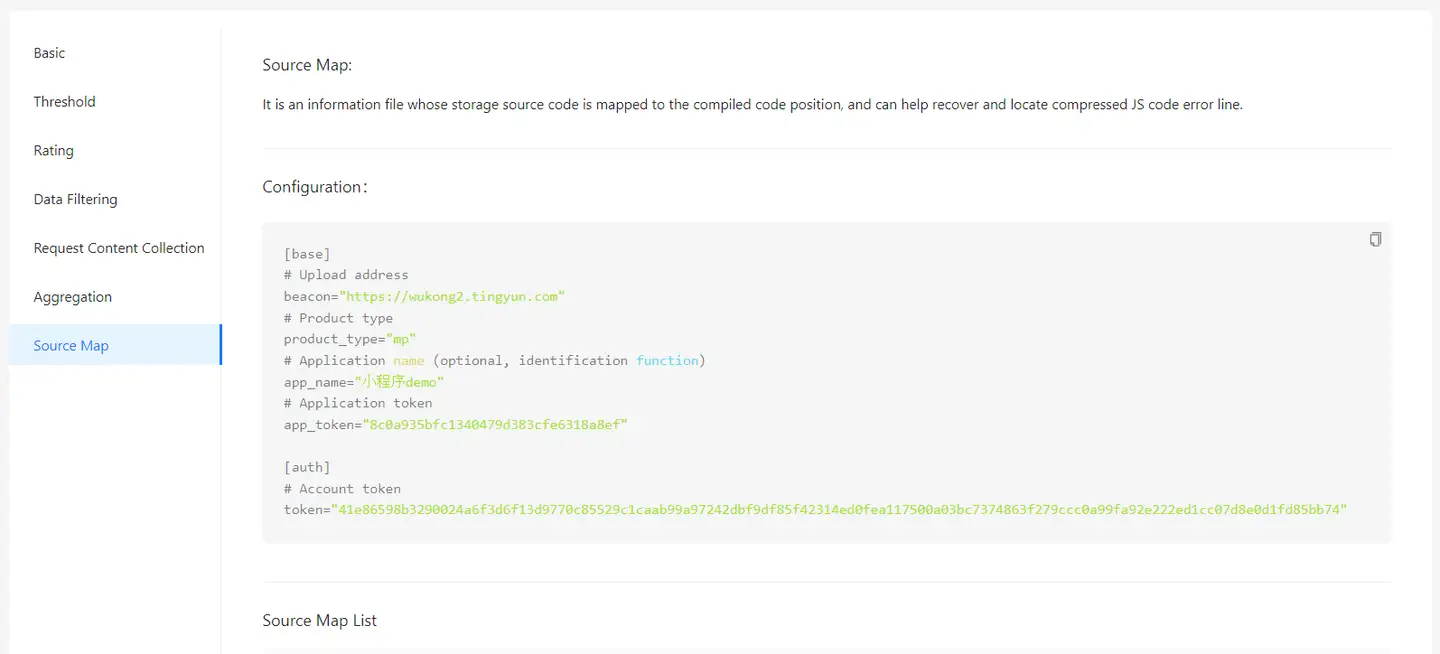application settings
Click on the application settings corresponding to the app in the mini-program list to configure the basic settings, threshold settings, and rating settings for that application.
basic settings
This template allows for setting the mini-program application name, downloading probes, and configuring the display colors and range values for various metrics (onReady, first response, request duration, request error rate, JS error rate, server-side duration, performance score, load duration, setData frequency, setData duration, operation time, operation request duration, average server-side operation duration, and network request frequency) in the regional module.
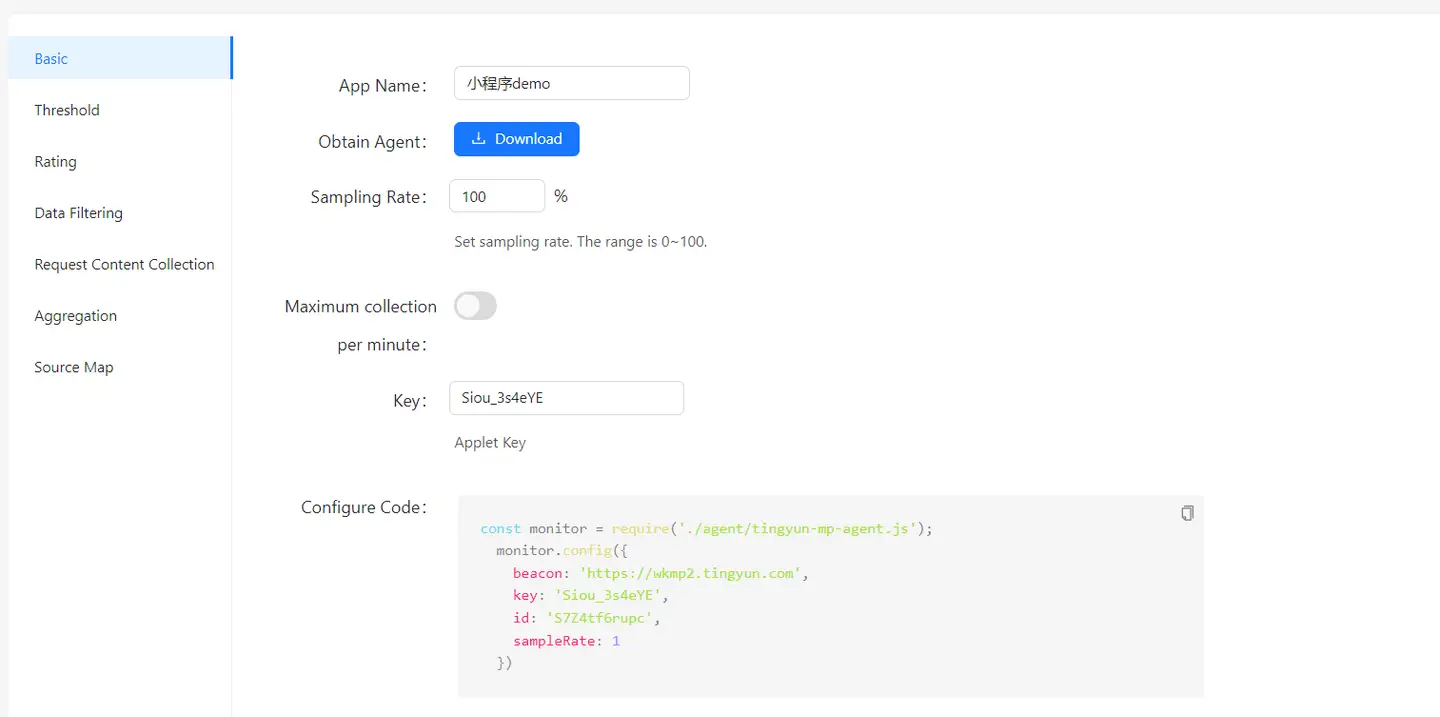
threshold settings
Customizable thresholds for slow pages (load duration threshold), slow requests, slow operations, setData lag threshold, and custom load duration threshold.
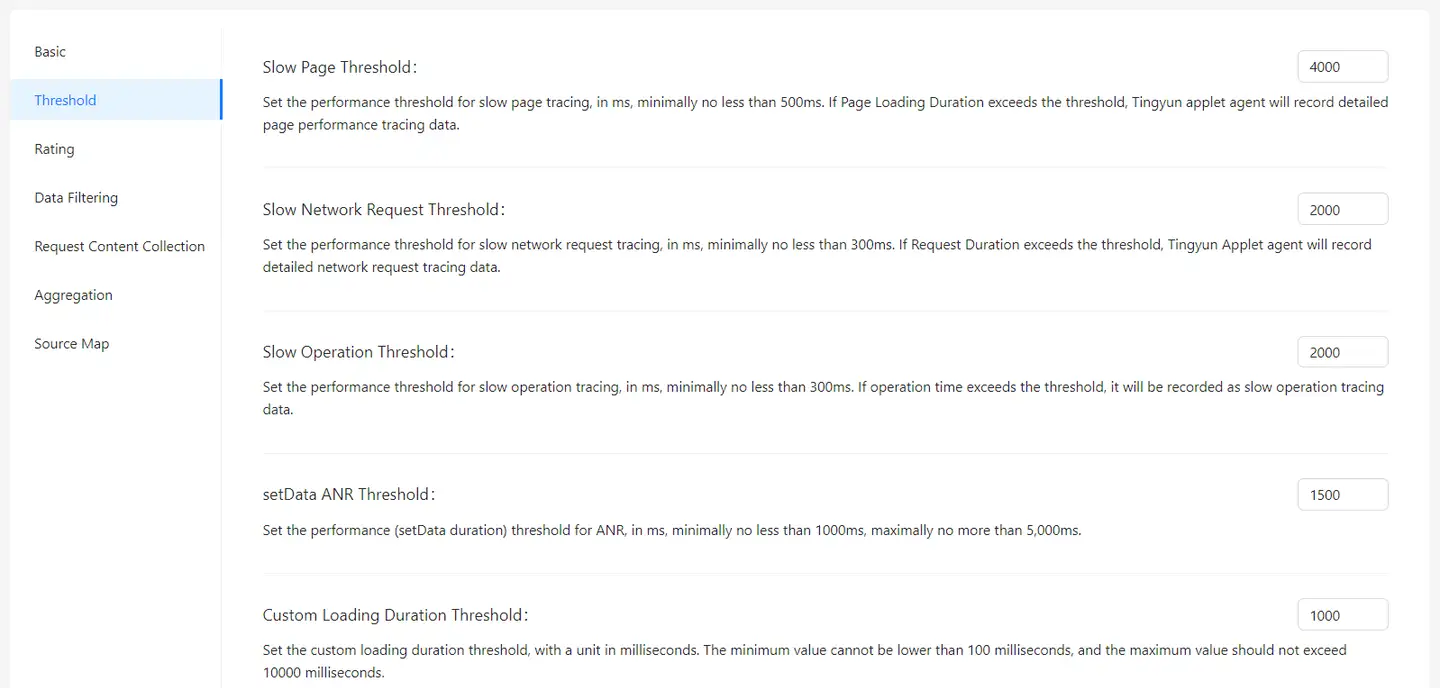
rating settings
The score measuring the overall user experience of the mini-program is based on a composite evaluation of 7 factors, each rated out of 100 points. The formula is as follows:
Score = Weighted score for JS error rate + Weighted score for onReady + Weighted score for first response (20%) + Weighted score for request duration + Weighted score for request error rate + Weighted score for lag rate + Weighted score for operation usability
The values for time-related metrics are taken as percentiles and can be customized.
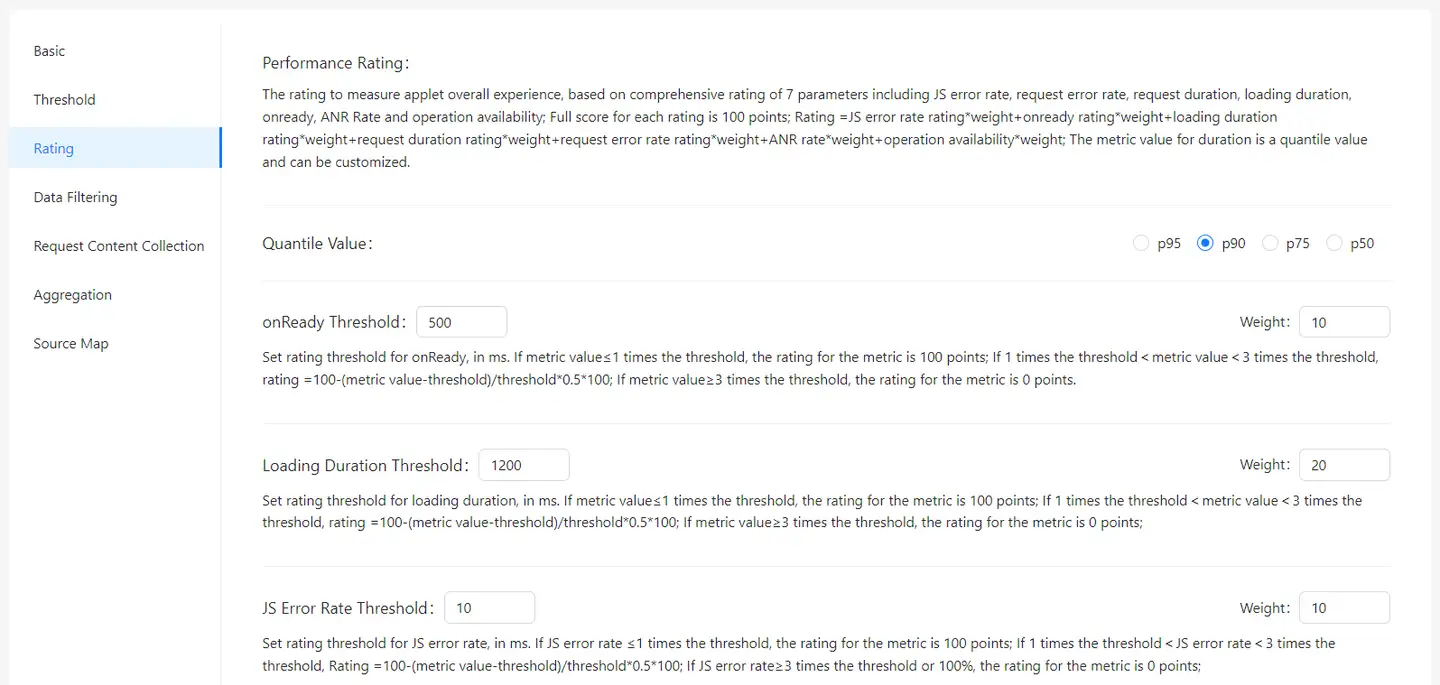
data filtering settings
You can configure settings for network errors, whether to obtain detailed information about setData, and content, as well as setting a blacklist for network request domains.
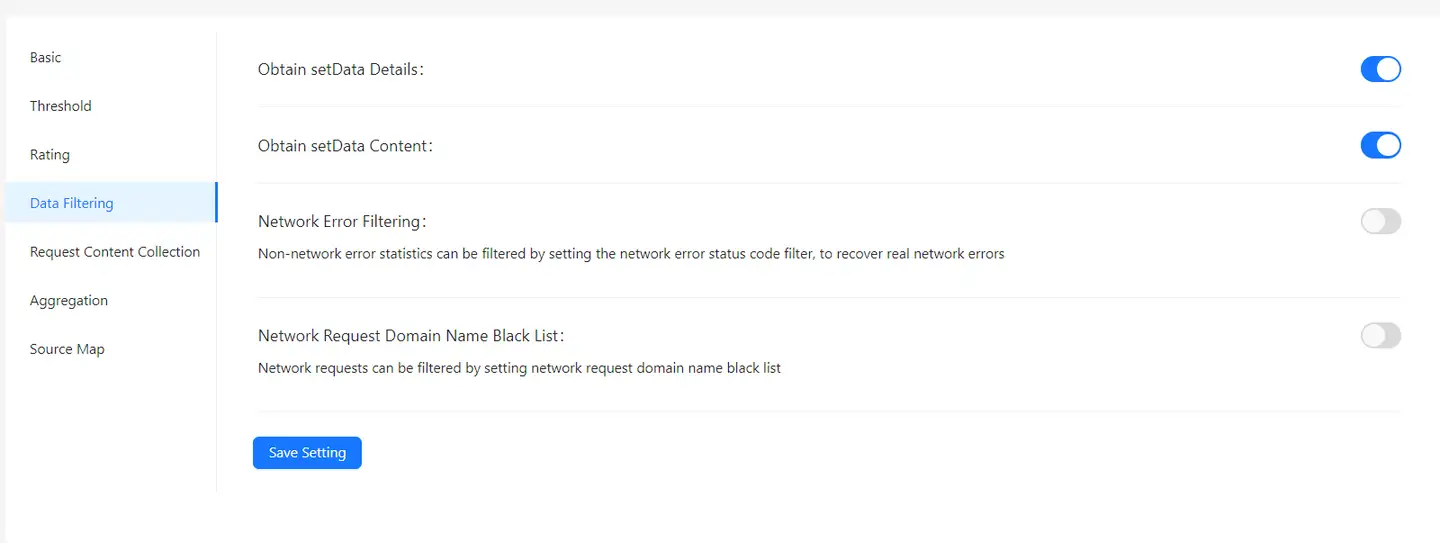
request content collection
You can configure settings for request content, request body size, and blacklists/whitelists.
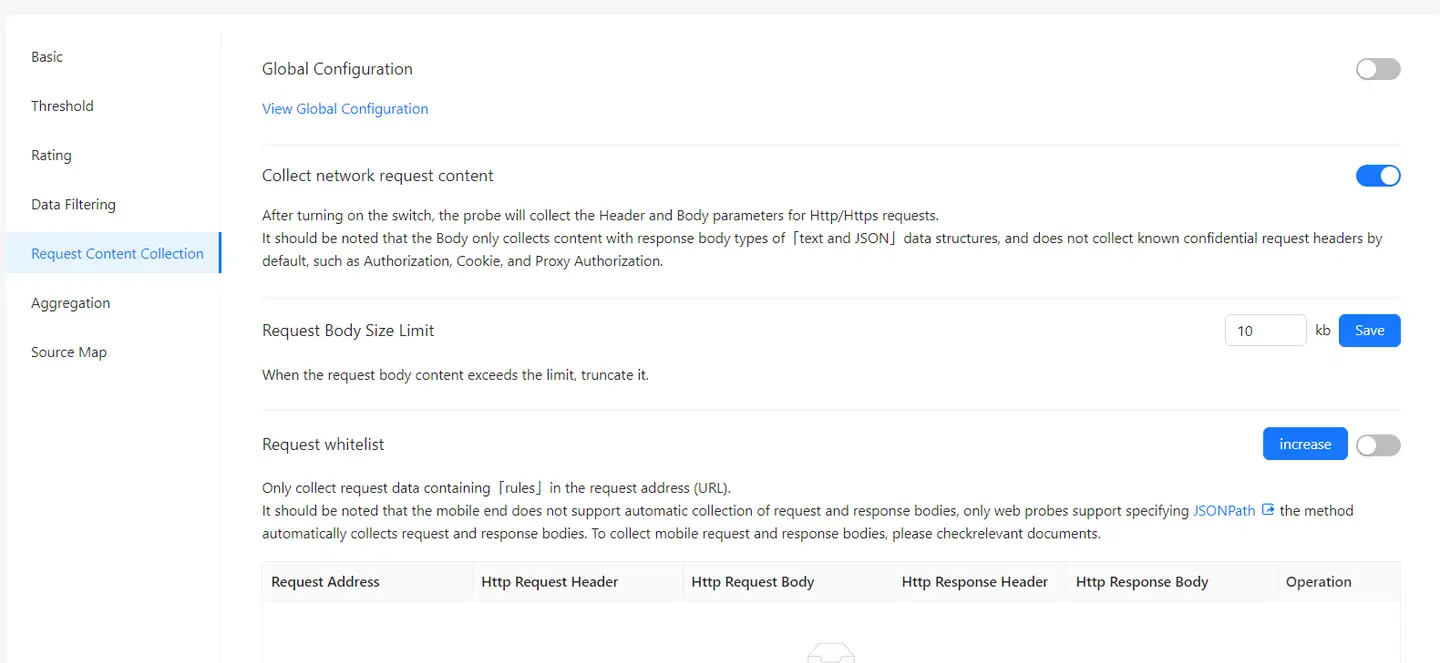
aggregation settings
-
The system has a standard aggregation rule for page URLs, paths, and request URLs. Besides the standard aggregation, custom aggregation rules can also be used.
Purposes of Custom Aggregation Rules:
- Split URLs that are aggregated by default according to business needs.
- Merge URLs that are separated by default according to business needs.
- Split parameters appended to the URL according to business needs.
- Split parameters in the URL's request headers or body according to business needs.
Usage Rules:
-
Click to add a URL aggregation rule. Enter the URL or path that needs an adjusted aggregation rule in the URL input box, and click "Identify."
-
The system will automatically split the URL or path into hostname, path, and parameters, generating several aggregation options. You can also modify the rules in the selection box. After making modifications, the final aggregation result can be viewed below. Click "Save" to apply the changes.

Source Map
For more details, refer to sourceMap
